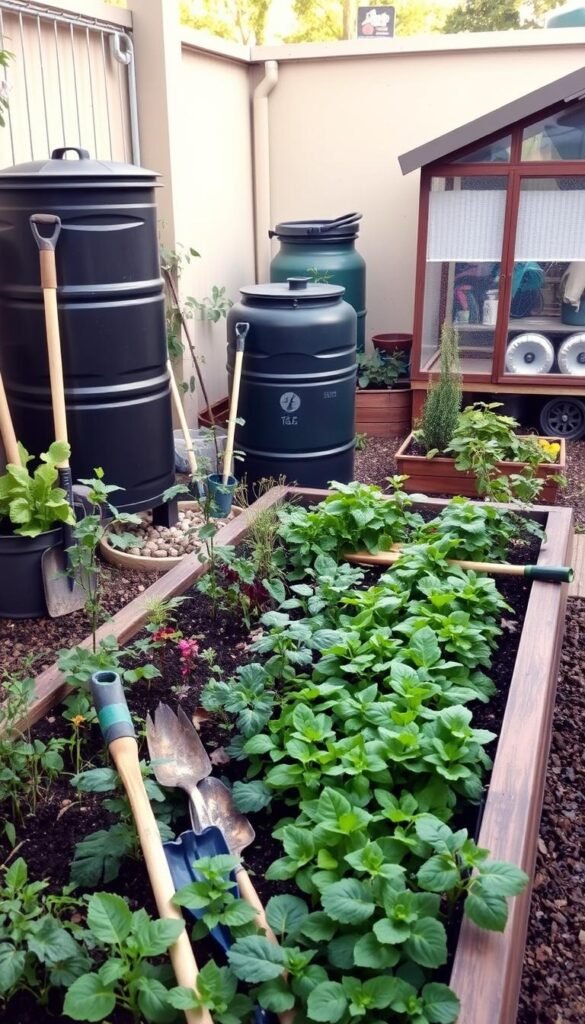Imagine stepping outside your door to harvest crisp vegetables and fragrant herbs grown entirely through your own care. This vision becomes reality when you build a resilient food source right at home. More than just planting crops, this approach lets you redefine your relationship with nature while cutting grocery bills and boosting food security.
Traditional methods often rely on store-bought supplies, but a thoughtfully designed system thrives through natural cycles. You’ll learn to work with seasons, save seeds from your strongest plants, and transform kitchen scraps into nutrient-rich compost. These practices create a loop where your space feeds itself—and your family—with minimal outside input.
Success starts with understanding how soil health, smart tool choices, and plant diversity work together. By focusing on long-term productivity, you’ll spend less time troubleshooting and more time enjoying fresh meals. Whether you’re new to growing food or refining existing skills, this guide helps you cultivate confidence alongside your crops.
The journey toward food independence isn’t about perfection—it’s about progress. With each season, you’ll discover how small changes lead to big rewards. Let’s explore how to create a thriving ecosystem that nourishes both your household and the environment.
Getting Started with Your Self-Sufficient Garden
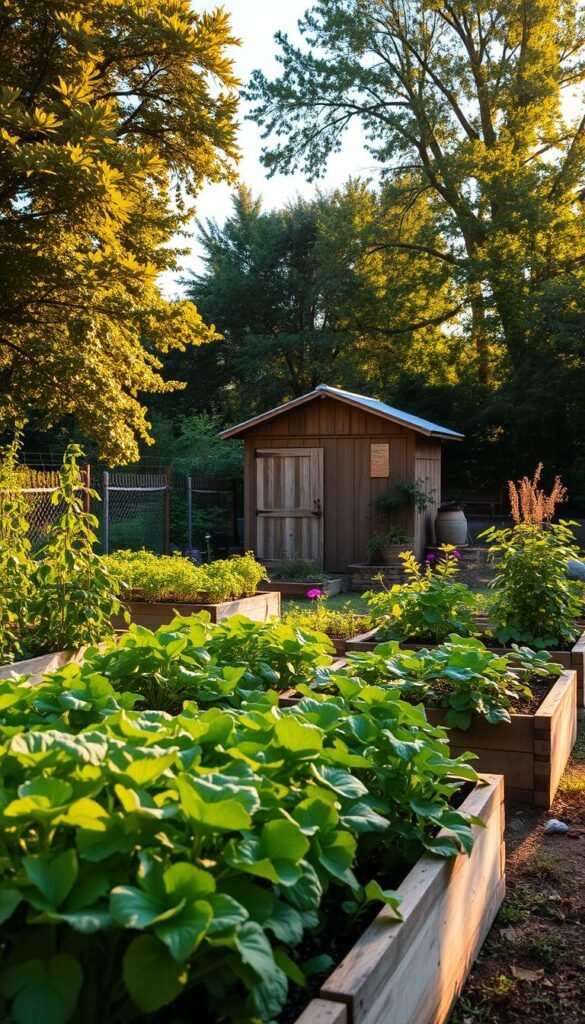
Transforming your backyard into a personal food hub begins with rethinking how resources flow through your space. Unlike typical plots that depend on store-bought supplies, a self-reliant setup focuses on closing the loop—turning waste into nutrients and saving seeds for future harvests. This approach builds resilience against unpredictable grocery prices or shortages.
What Does True Self-Sufficiency Look Like?
A truly independent garden produces its own fertilizers through compost bins and mulching systems. Instead of buying seedlings yearly, you’ll learn to collect seeds from thriving plants. For example, tomato seeds from your juiciest fruits can replant next season’s crop. This cycle cuts costs while deepening your connection to the land.
Why Your Backyard Boosts Security
Growing food at home does more than save money—it creates a safety net. Fresh veggies like kale or carrots provide daily nutrients without relying on stores. You’ll also gain skills in canning or drying extras, ensuring meals even during off-seasons. Plus, nothing beats the peace of mind from knowing exactly how your food was grown.
| Benefit | Impact | Example |
|---|---|---|
| Cost Savings | Reduces grocery bills by 30-50% annually | Growing herbs instead of buying $4 packs weekly |
| Supply Chain Protection | Ensures access during disruptions | Harvesting potatoes when stores run low |
| Nutrition Boost | Higher vitamin content in homegrown produce | Spinach with 2x the iron of store versions |
| Mental Well-being | Reduces stress about food affordability | Confidence in preserving summer tomatoes for winter |
Starting small? A beginner’s gardening checklist helps avoid overwhelm. Focus on 3-5 easy crops first, like lettuce or green beans, then expand as your confidence grows. Each season, you’ll rely less on external inputs and more on your own thriving ecosystem.
Planning Your Garden Layout and Tools
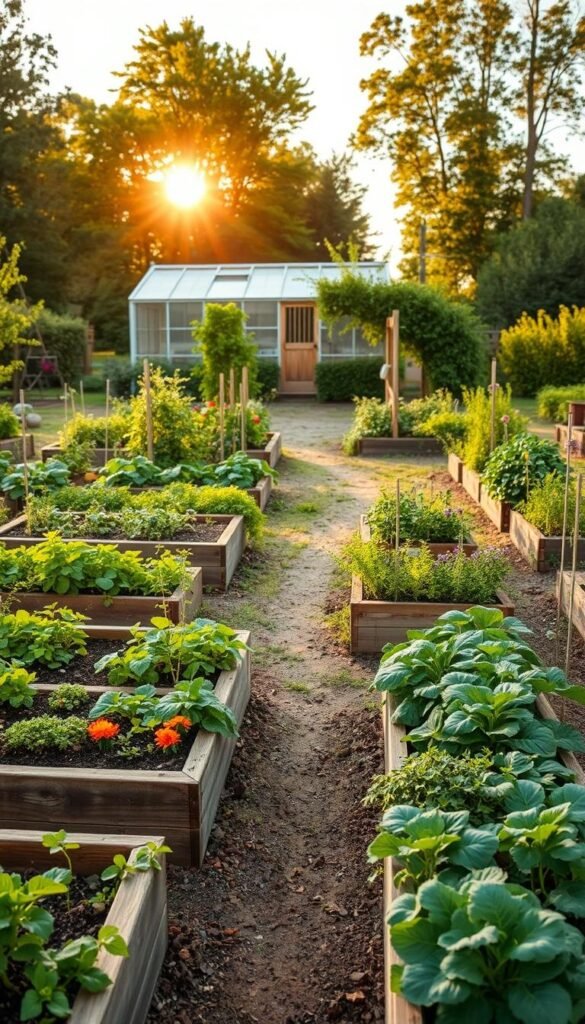
Designing a productive growing plot begins with understanding your unique environment. You’ll want to map sunlight patterns, note wind directions, and identify water sources. These elements determine where to place crops for maximum yield.
Assessing Your Garden Space
Start by measuring your available area. Use a tape measure to mark boundaries, then track sun exposure across seasons. Leafy greens thrive in partial shade, while tomatoes need 6+ hours of direct light. Observe drainage after rain—puddles signal poor absorption.
Optimize every square foot with vertical trellises or square-foot gardening. This method groups plants by size, reducing walkways by 75% compared to traditional rows. Test soil pH with a $10 kit—most veggies prefer 6.0–7.0.
Essential Tools to Kick-Start Your Garden
Invest in three core items: a sturdy trowel for planting, bypass pruners for trimming, and a wheelbarrow for moving compost. Add a drip irrigation kit to save 30% on water usage. For small areas, fabric pots let you grow potatoes or carrots on patios.
Prioritize multi-use tools over single-task gadgets. A hoe can weed, hill soil, and create seed trenches. Store them in a shaded shed to prevent rust. With smart planning, your setup becomes a low-effort, high-reward system.
Your Self-Sustaining Garden Checklist: Tools, Seeds, and Soil Amendments
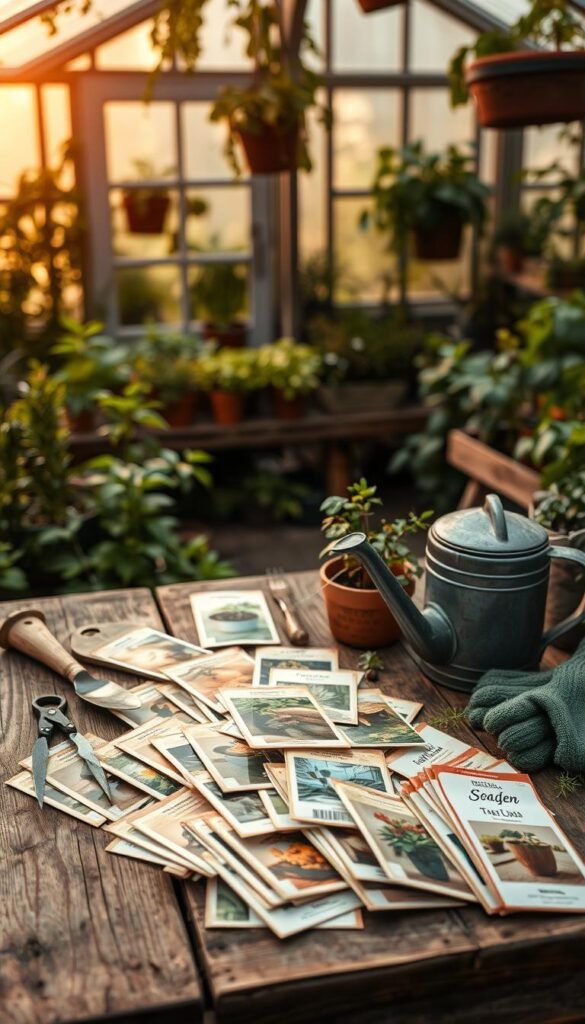
Equipping your space with the right resources transforms your growing area into a reliable food source. Let’s break down what you’ll need to cultivate abundance year after year.
Start with durable hand tools like a digging spade and bypass pruners. These workhorses handle daily tasks from planting to pruning. For larger spaces, consider a wheeled cultivator to aerate soil efficiently. Pro tip: Stainless steel tools resist rust and last decades with proper care.
When selecting seeds, prioritize heirloom varieties like those in the Vegetable Seed Vault Kit. Its 16,000+ non-hybrid options let you save seeds season after season. The Seed Safe Survival Kit offers 35 types—perfect for growing diverse crops while maintaining genetic resilience. Focus on plants that thrive in your climate and align with meal plans.
| Category | Essentials | Benefits |
|---|---|---|
| Soil Boosters | Compost, bone meal, worm castings | Enhances nutrient density |
| Seed Storage | Airtight containers, silica packets | Preserves viability for 3-5 years |
| Harvest Care | Root cellar plans, drying racks | Extends food availability |
Building healthy earth matters most. Mix in organic matter like aged manure when preparing beds. For organic gardening methods, try leaf mold or seaweed extracts. These amendments feed microbes that sustain plant growth naturally.
“A well-stocked garden isn’t about having everything—it’s about having the right things.”
Plan purchases during offseason sales to save 20-40%. Store tools in dry areas and keep seed packets in cool, dark spaces. With this checklist, you’ll build a system that grows more independent each season.
Selecting the Right Location and Preparing Your Soil
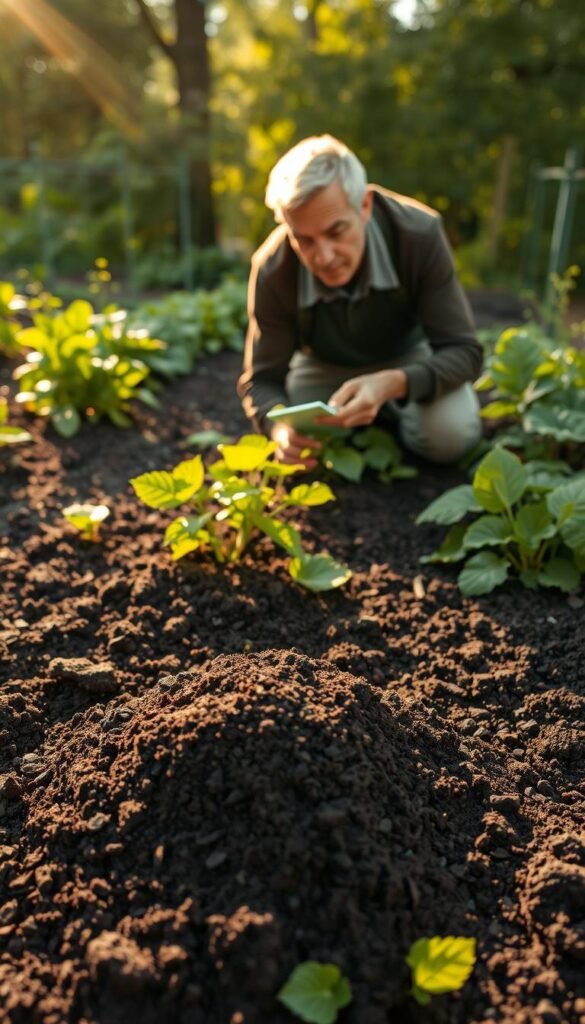
Your plants’ success begins beneath the surface—where roots access nutrients and moisture. Start by observing how sunlight moves across your space through seasons. Most vegetables need 6-8 hours of direct light daily. Check drainage after rainstorms: puddles lasting over 4 hours signal poor absorption.
Conducting Soil Tests for Nutrient Needs
Grab a DIY test kit from your local garden store ($12-$20) to measure pH and key minerals. For detailed insights, mail samples to your state’s agricultural extension service. Results reveal missing elements like nitrogen or potassium—common reasons for stunted growth in new plots.
Amending Your Soil Naturally with Compost and Mulch
Mix 2-3 inches of finished compost into planting beds each spring. This “black gold” feeds earthworms and balances pH naturally. Top with straw or shredded leaves to lock in moisture. Over time, organic matter breaks down, creating air pockets for stronger root systems.
| Amendment | Benefits | Application Time |
|---|---|---|
| Compost | Boosts microbial activity | Spring/Fall |
| Aged Manure | Adds slow-release nitrogen | Fall only |
| Leaf Mold | Improves water retention | Any season |
| Straw Mulch | Prevents weed growth | Post-planting |
Test your earth annually—nutrient levels change as plants feed. Keep a journal to track amendments and crop performance. Healthy ground grows resilient plants that resist pests naturally.
Choosing and Saving Heirloom Seeds for Your Garden
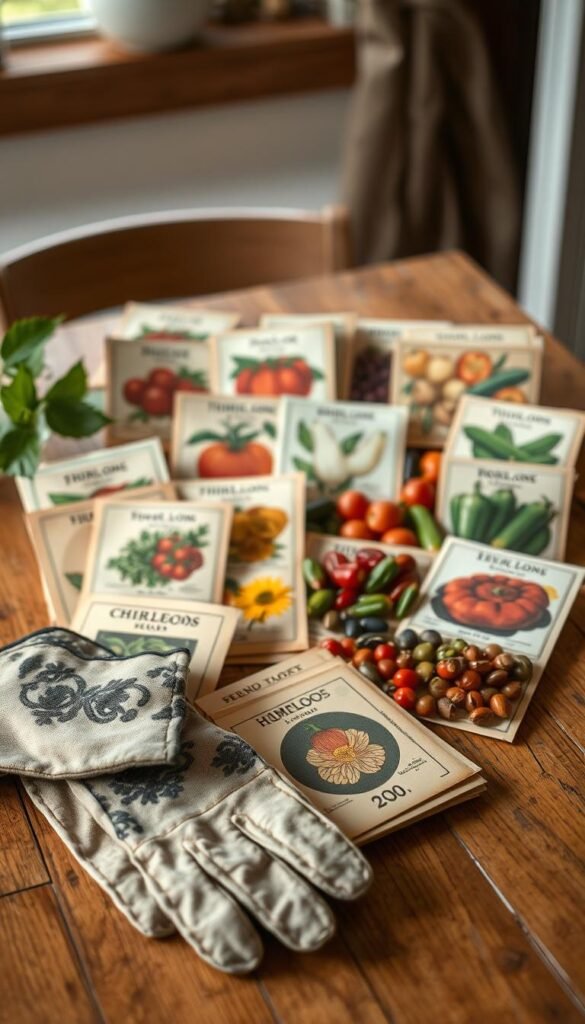
The journey to a thriving food source starts with what you plant—not just how you grow it. Heirloom varieties offer genetic consistency, letting you replicate successful harvests year after year. Unlike hybrids or GMOs, these seeds carry decades of adaptation, creating plants that match your local climate and soil.
Tips for Selecting High-Quality Seeds
Look for suppliers specializing in open-pollinated varieties. Check packaging dates—freshness impacts germination rates. Reputable companies often share growing guides and seed origin stories. A simple water test reveals viability: sinkers sprout, floaters rarely do.
| Seed Type | Key Benefit | Best For |
|---|---|---|
| Heirloom | True-to-type results | Seed saving |
| Hybrid | Disease resistance | Single-season use |
| Organic | Chemical-free starts | Eco-conscious growers |
How to Save Seeds for Future Planting
Timing matters. Collect dry beans when pods rattle, and tomato seeds after fermentation removes germination inhibitors. Store in labeled jars with silica packets to prevent mold. Properly dried varieties last 3-5 years when kept cool and dark.
Your saved seeds adapt to your space over time. Plants from locally harvested stock often outperform store-bought options by the third year. For detailed harvesting and storing techniques, track maturity dates and weather patterns specific to your region.
“One generation plants the trees; another gets the shade.”
Start with easy crops like peas or lettuce before tackling cross-pollinators like squash. With practice, you’ll build a seed library that reflects your garden’s unique strengths.
Embracing Companion Planting and Crop Rotation Strategies
The secret to a thriving growing space lies in partnerships—both above and below the soil. By pairing plants strategically, you create natural pest control and nutrient-sharing systems. These methods work like a well-choreographed dance, where each species supports the others’ success.
Benefits of Planting Compatible Crops Together
Certain combinations act as nature’s bodyguards. Basil planted near tomatoes cuts thrips infestations by 63%, while marigolds suppress harmful nematodes. The classic Three Sisters trio—corn, beans, and squash—boosts yields by 20% through shared resources. Beans fix nitrogen for heavy feeders, squash shades out weeds, and corn offers climbing support.
Planning Effective Crop Rotation to Maintain Soil Health
Rotate plant families yearly to prevent nutrient depletion. Follow nitrogen-loving leafy greens with soil-restoring legumes like peas. A three-year cycle breaks pest cycles and balances microbial activity. Integrate regenerative practices by planting deep-rooted crops after shallow ones to aerate compacted earth.
These strategies build resilience season after season. You’ll spend less time battling pests and more time enjoying robust harvests. With thoughtful pairings and rotations, your plot becomes a self-reinforcing ecosystem that thrives with minimal intervention.

